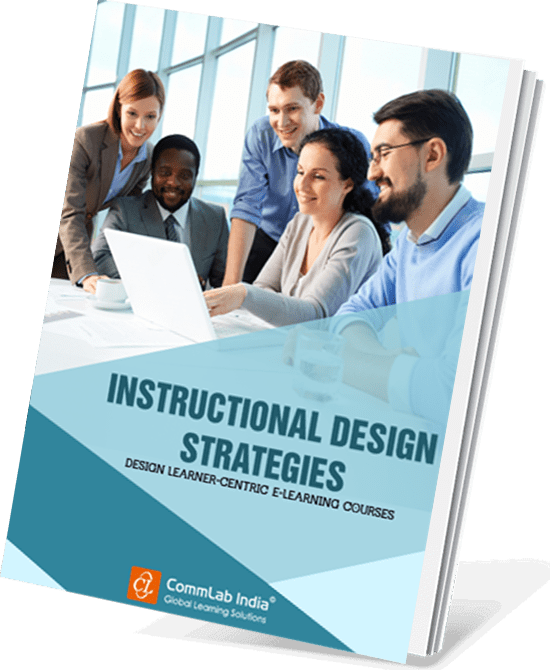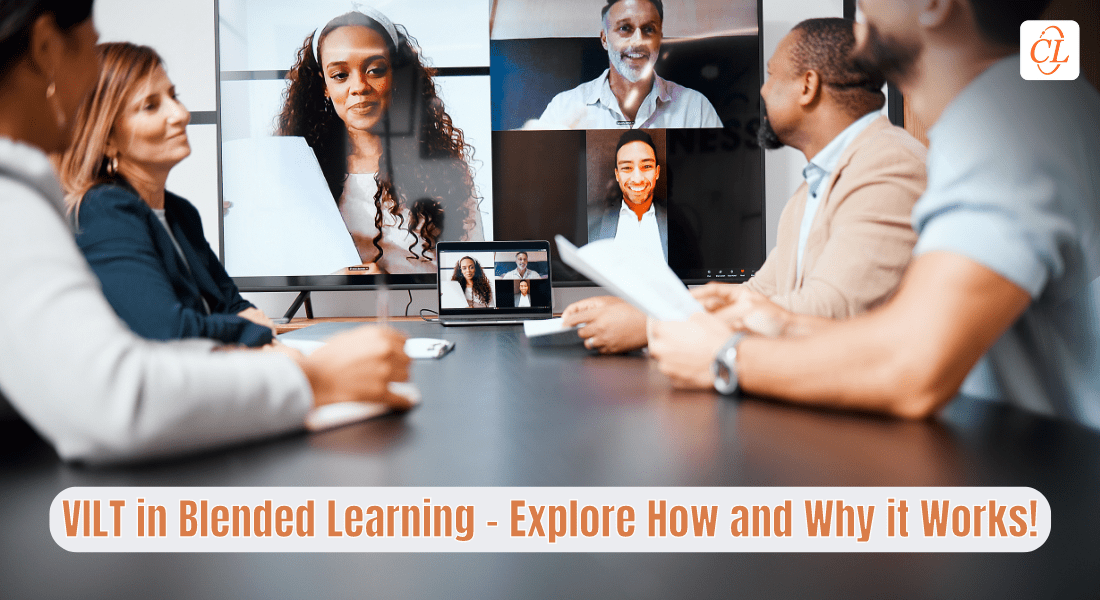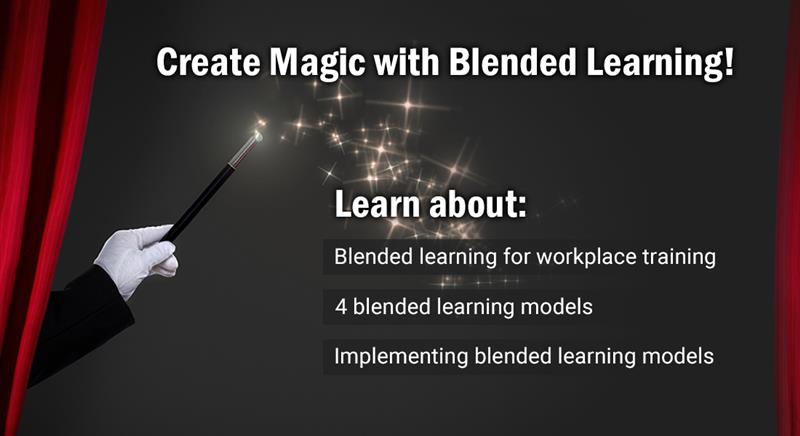What Are the 5 Best Practices for Effective Blended Learning?

The beauty of the blended learning environment is that you get all the advantages of technology without forgoing crucial human interaction. Your learners can use online resources anytime, and anywhere they choose to enhance their learning experience. Face-to-face instruction continues to provide them with the support and feedback they require. However, understanding how to effectively blend these two strategies is critical. In this blog, we’ll take a look at the concept of blended learning, the benefits of blended learning in corporate training, and finally explore the 5 best practices to design effective blended learning.
→ Download Now: Instructional Design Strategies to Design Engaging eLearning Courses
Table of Contents
- What is Blended Learning?
- What Are the Benefits of Blended Learning in Corporate Training?
- What Are the 5 Best Practices for Effective Blended Learning?
What Is Blended Learning?
Organizations have always preferred traditional classroom instruction. However, in recent years, eLearning has taken center stage. Today’s learners desire training that combines the personalized communication of a classroom with the convenience of self-paced learning. Blended learning provides the ideal answer by combining the engagement of live classroom training with the flexibility of learning at any time, and from any location. Different types of blended learning formats also aid in continual learning. When you combine Instructor-led Training and eLearning for corporate training, learners gain a holistic learning experience.

What Are the Benefits of Blended Learning in Corporate Training?
If you want to make the most blended learning for your training initiatives, then you need to explore these 5 best practices as they’ll help you develop effective blended learning programs for your corporate workforce.
What Are the 5 Best Practices for Effective Blended Learning?
Are You Looking to Implement Blended Learning in Your Workspace?
Here are a few best practices to keep in mind:
- Determine Your eLearning Objectives Ahead of Time
- Determine the Demand for Blended Learning
- Encourage Your Employees to Collaborate with one Another
- Select the Right Platform, Approach, and Methodology
- Consider Creative Ways to Construct Blended Learning
1. Determine the Learning Objectives Upfront
Each set of learners has distinct learning requirements. New hires, for example, will require complete knowledge of their company’s business procedures, whilst veteran staff may only require occasional refresher training. With blended learning, you have the benefit of giving your learners the proper solution that is targeted and tailored to their learning requirements. You can leverage blended learning for employee onboarding programs to facilitate face-to-face interaction on procedures for the new employees, while older employees gain fresh insights from eLearning on new product and service features.
2. Determine the Need for Blended Learning
Blended learning is, by its very nature, adaptable. It’s critical to understand the form and scope of your learners’ demands before building a blended learning solution. Ask yourself these questions before designing blended learning. When do you want the training program to start? What is the size of your training group? Both these answers need to be found out when determining the need for a blended learning solution.
Let’s say your firm is preparing for the global launch of a new product in the next month. You must quickly train your sales staff on the key characteristics of this new product. The demand is urgent, and the learners are in large numbers. As a result, holding a classroom training session on its own is not a viable choice.
You can distribute a brief video or infographic highlighting the product’s key features to employees right away as part of an online course. This allows the sales staff to learn the product’s features speedily. Later, you can host an ILT session that provides in-depth knowledge about the product.

Instructional Design Strategies to Design Engaging eLearning Courses
Design Learner-Centric eLearning
- Importance of ID Strategies in eLearning
- Parameters to Select the Right ID Strategy
- ID Strategies for Effective Results
- Case Studies
3. Encourage Your Employees to Collaborate with one Another
Whenever your workforce connects with one another, they have the chance to share and learn from each other’s experiences. So plan timely interactions and collaborative activities as part of your blended learning program. Apart from the face-to-face interactions, you can assign gamification challenges that foster team spirit and better application of concepts discussed in the classroom training.
4. Select the Right Platform, Approach, and Methodology
Once you’ve established your learning objectives for the employee training program, you need to figure out which parts of your blended learning module should be delivered offline and which ones can be hosted online. Put yourself in your learners’ shoes. As blended learning uses several approaches to convey information, you must always match the training platform to the learning topic. For instance, scenario-based exercises might be well-suited for an online course, while group discussions might be more productive through classroom training.
Watch this video to learn about the 7 powerful instructional methods that can be used to deliver high-quality, learner-centric blended learning.
5. Consider Creative Ways to Construct Blended Learning
Although blended learning helps facilitate an engaging training experience, the design of the online learning modules plays a significant role in determining its overall effectiveness. So make sure you plan thoroughly about what goes into a blended learning face-to-face solution and what is offered via asynchronous online course. It requires a thorough understanding of your key learning goals and learners’ profiles. If the blend isn’t designed properly, you won’t be able to reap its multiple benefits.
Fortunately, employing the job task inventory matrix is one approach to ensure there are no lapses while developing a blended learning solution.
Let’s take a look.
- For each learner profile, a job task inventory matrix includes the job title, work responsibilities, and a list of tasks that each learner must complete on the job.
- Once you determine these activities, you must categorize them using four key criteria: frequency, significance, learning difficulty, and the danger of making mistakes on the job.
Let’s look at an example of how to use the job task inventory matrix to create a blended learning solution. If all the elements are on the higher end of the matrix, then you can use a blend of ILT and eLearning.
- A subject matter expert supplies the content and insight into the implications or risks involved in the classroom.
- Demos, virtual practice sessions, and quick feedback are all available through eLearning.
- On-the-job aids improve the learners’ comprehension.
In case the information needed to fulfill a specific professional function is not difficult to learn, and the elements of the job task inventory matrix are on the lower side, then there’s less risk involved. Here, an instructor-led training program is not needed. Rather, you can use these learning strategies to directly train the learner: self-paced learning, social learning, and performance support tools.
Parting Thoughts!
You can use these tips to create blended learning courses that combine the benefits of face-to-face instruction and online learning and ensure that your learners get the most out of their training. Developing a blended learning strategy can be a challenging task. Still, you can build an efficient blended learning solution if you are properly organized and allow yourself to be creative. With blended learning, you can create learner-centric courses for your company. To put your best foot forward, check out our informative guide on instructional design strategies. It will help you design high-quality, engaging eLearning courses for your learners. Download now!
Editor’s note: This post was originally published on May 27, 2022 and has been updated for comprehensiveness.





![Top 5 Blended Learning Formats for Software Training [Infographic]](https://blog.commlabindia.com/hubfs/blogs/Top%205%20Blended%20Learning%20Formats%20for%20Software%20Training.jpg)
